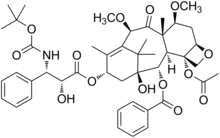
We report the design and synthesis of novel 5,6-diarylated pyridin-2(1H)-one derivatives as pharmacophoric PDE10A inhibitors. This highly potent molecular scaffold was developed from an inactive diarylpyridine-2-amine derivative 3b by extensive and systematic analogue synthesis and SAR analysis. Further optimization of the scaffold resulted in identification of pyridin-2(1H)-one 18b as a lead compound with good potency (IC50 = 1.6 nM) and selectivity (>6000-fold) over other related PDEs but with a poor pharmacokinetic profile. Careful metabolite profiling of 18b revealed that poor systemic exposure in rats (Cmax = 44 ng/mL; AUC0–t = 359 ng·h/mL) at 10 mg/kg was due to the formation of O-glucuronide conjugate by phase 2 metabolism. The structure of the glucuronide metabolite was confirmed by retention time and LC–MS/MS fragmentation matching with the synthetic glucuronide 26. The problem of low exposure of 18b was effectively addressed by its conversion to an acetate prodrug25b, which upon oral dosing resulted in an improved pharmacokinetic profile (Cmax = 359 ng.h/mL; AUC0–t = 2436 ng.h/mL) and a desirable brain to plasma ratio of 1.2. The prodrug25b showed good efficacy in selected rodent models of psychosis.









